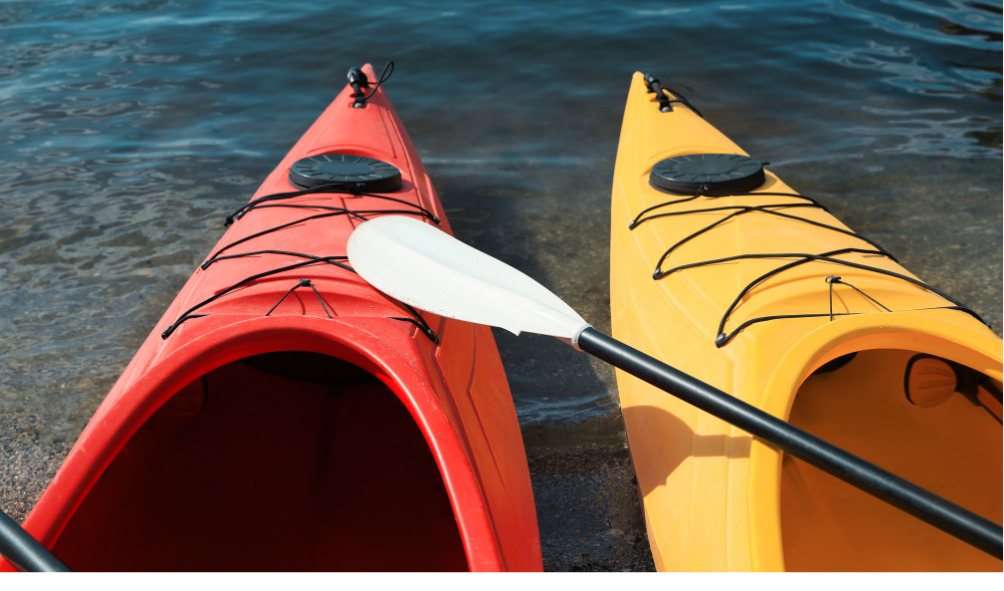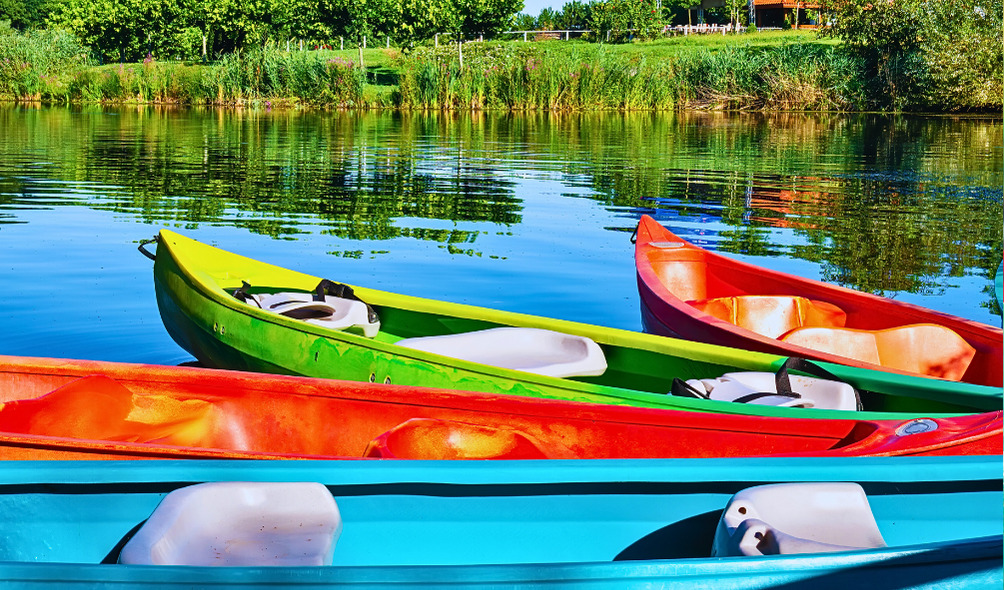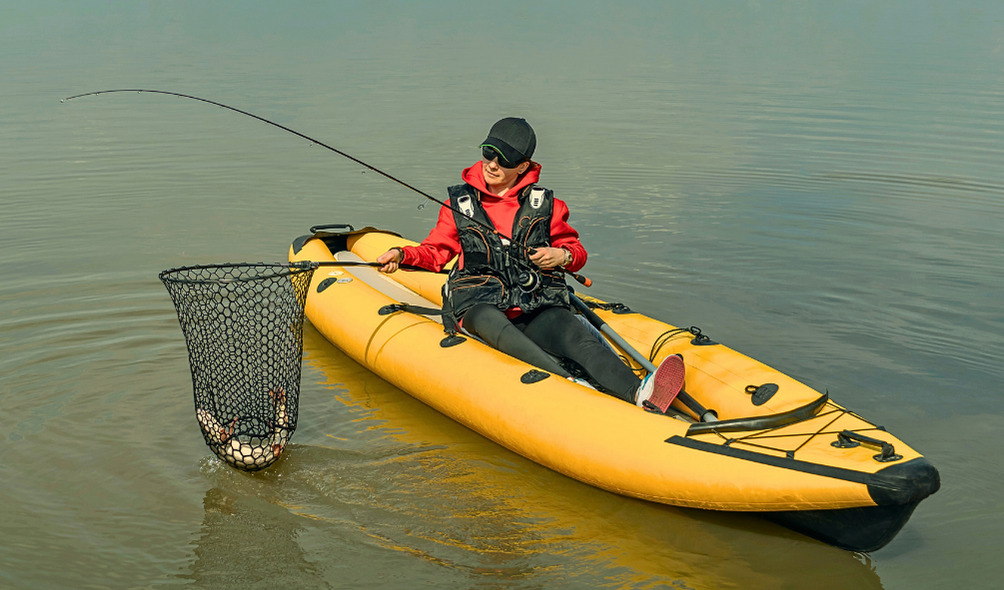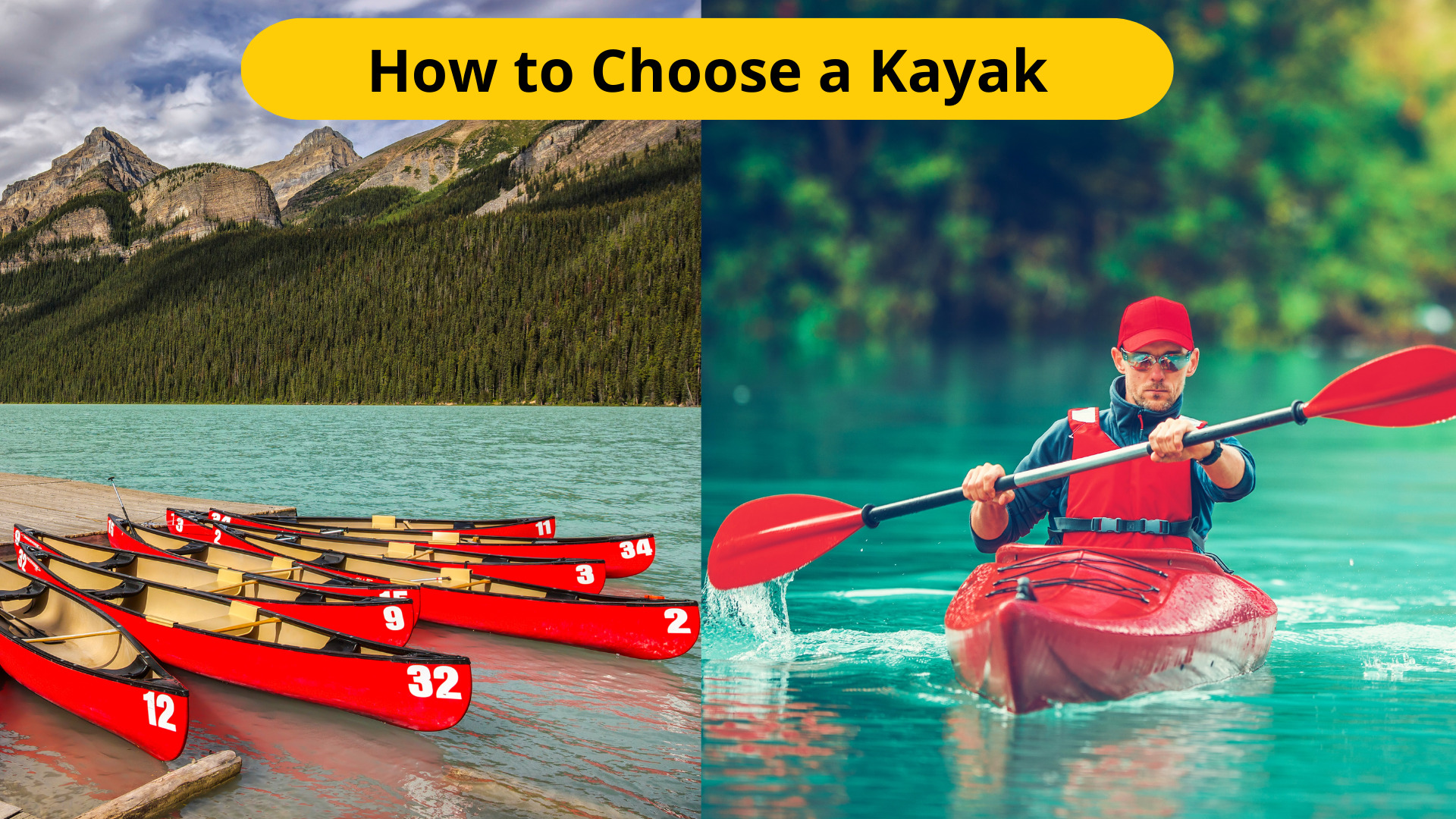How To Choose A Kayak | Expert Tips For You
Are you planning to buy a kayak, you need to start by choosing the right kayak for your needs. With so many types of kayaks available on the market, it can be overwhelming to pick one that will suit your needs best. To be sure, we’ve got you covered. This article contains expert tips on how to choose a kayak that suits your needs and preferences.
Types of Kayaks and How to Choose a Kayak
Kayaks come in a variety of types, including recreational kayaks, touring kayaks, whitewater kayaks, sit-on-top kayaks, and inflatable kayaks. Each style of kayak is built for a certain purpose, so it’s vital to choose one that matches your kayaking goals.
Recreational Kayaks

Recreational kayaks are an efficient choice for beginners and casual paddlers. They are often wider and shorter than other varieties of kayaks, making them more stable and easier to operate. Recreational kayaks are intended for use on calm waterways such as lakes and slow-moving rivers.
Touring Kayaks

Touring kayaks are ideal for longer voyages and more experienced paddlers. They are longer and slimmer than recreational kayaks, making them faster and more efficient. Touring kayaks are intended for usage on open water, such as lakes, bays, and oceans.
Whitewater Kayaks

Whitewater kayaks are designed to navigate rapids and other fast-moving water. They are shorter and more agile than other varieties of kayaks, with a rounded hull and sharp edges for stability and control.
Sit-on-Top Kayaks

Sit-on-top kayaks are a popular choice for recreational paddling in warm weather. They have an open cockpit, allowing the paddler to sit on top of the kayak rather than inside it. Sit-on-top kayaks are ideal for beginners and on calm waters.
Inflatable Kayaks

Inflatable kayaks are a useful and portable kayaking solution. They are less expensive than other varieties of kayaks and may be simply inflated and deflated for storage and transport. Inflatable kayaks are intended for use in calm waters for recreational paddling, fishing, and touring.
Kayak Size and Weight
The size and weight of your kayak should be determined by your body size, weight, and level of experience. A larger kayak will be more stable, while a smaller kayak will be easier to manage. A heavier kayak will last longer, but it will be more challenging to transport.
Kayak Material
Kayaks can be constructed from a number of materials, such as plastic, fiberglass, Kevlar, and carbon fiber. Each material has advantages and disadvantages, therefore, it is important to pick a material that meets your goals and budget.
Plastic
High-density polyethylene (HDPE) kayaks are the most popular because they are long-lasting, inexpensive, and low-maintenance. They are also lightweight and portable. They are, however, prone to fading and may not be as stiff as other materials.
Composite
Kayaks made from composite materials such as fiberglass, Kevlar, and carbon fiber are lightweight, strong, and stiff. They are also fast and efficient in the water. However, they are more expensive than plastic kayaks and require more maintenance.
Wood
Wooden kayaks are beautiful, lightweight, and quiet in the water. They are also environmentally friendly. However, they require more maintenance and are more expensive than plastic kayaks.
Inflatable
Inflatable kayaks are composed of PVC or vinyl and are simple to store and transport. They are also inexpensive and long-lasting. They may not perform as well as hard-shell kayaks, though, and they may be more prone to punctures.
Folding
Aluminum, wood, and synthetic materials are used to make folding kayaks. They are lightweight and portable, and they can be easily assembled. They are, however, more expensive than plastic kayaks and may not be as durable.
Kayak Features

The features of your kayak will be determined by the type of kayaking you intend to do. The cockpit size, seat comfort, footrests, storage capacity, and number of hatches are all factors to consider.
Size and Weight
Kayaks come in a variety of sizes and weights, ranging from short and lightweight kayaks meant for speed and agility to longer and heavier kayaks designed for stability and simplicity of use. The proper size and weight of the kayak will depend on your body size, strength, and the sort of water you intend to paddle in.
Cockpit Style
The cockpit of a kayak is the entrance through which you sit and enter the boat. The cockpit style varies amongst kayaks, with some having larger and more open cockpits for easy entry and exit, while others have smaller and more enclosed cockpits for better protection from the elements.
Hull Shape
The hull design of a kayak influences its speed, stability, and maneuverability. Kayak hulls can be flat, rounded, or v-shaped, and each design offers significant advantages. Flat hulls are faster but less stable, whereas v-shaped hulls are faster but less stable.
Seating
Kayaks can feature a variety of seating options, including padded seats, molded seats, and even inflatable seats. Your comfort and stability on the water will be affected by the sort of seating you select.
Storage
Kayaks can include a variety of storage options, including waterproof hatches, bungee ropes, and built-in pockets. The sort of storage you select will be determined by the gear and equipment you intend to bring with you on your kayaking excursion.
Deck Style
A kayak’s deck is the upper half of the boat and can include amenities such as paddle holders, rod holders, and even built-in cup holders. These features can make your kayaking experience more convenient and functional.
Kayak Accessories
Paddles, life jackets, spray skirts, and other kayak accessories are available. Selecting the correct accessories for your boat will improve your comfort and safety. The features of your kayak will be determined by the type of kayaking you intend to do.
Kayak Price
Kayaks can cost anywhere from a few hundred to several thousand dollars. Establishing a budget and choosing a kayak that works within that budget is critical.
Remember that while a more expensive kayak may have more features and be made of higher-quality materials, it may not be necessary for your kayaking needs.
FAQ’s
How do I choose a kayak for beginners?
Consider your intended use and environment
Determine your skill level
Think about your budget
Choose the right type and size of kayak for your needs
What size kayak should I get for my height and weight?
Check the weight capacity and length of the kayak
Ensure that you fit comfortably in the cockpit or on the deck
Consider the width of the kayak for stability and ease of paddling
Which kayak is better to sit in or sit on?
Sit-in kayaks offer better protection from the elements and are more suitable for colder water
Sit-on kayaks are more versatile and easier to get in and out of, and provide a better view of the surroundings
What kayak should I buy for my weight?
Check the weight capacity of the kayak and ensure that it can support your weight and any additional gear or equipment
Consider the width of the kayak for stability and ease of paddling
Is an 8-foot or 10-foot kayak better?
The length of the kayak depends on the intended use and environment
An 8-foot kayak is more maneuverable and easier to transport but may sacrifice speed and tracking
A 10-foot kayak offers more speed and tracking but may be more difficult to maneuver in tight spaces.
Conclusion
Selecting the correct boat can make or break your kayaking experience. You may narrow down your selections and choose the kayak that best meets your demands and budget by evaluating the sort of kayaking you’ll be doing,
your body size and weight, the kayak’s material, features, and price. You’ll be able to choose a kayak that will give you years of enjoyment on the water if you follow the expert advice in this article.

